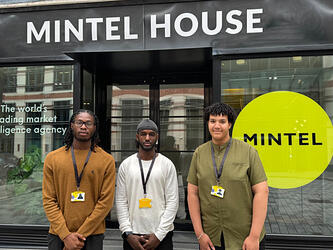Putting shoppers first
With a vast amount of information at their fingertips, consumers are now willing to switch brand allegiance in unprecedented ways. Shoppers have come to expect new and better in all categories, and they are willing to follow through on these expectations with their wallets.
This is also shifting the way we do brand research. Traditional quantitative surveys pay too much attention to the brands in question and too little attention to shoppers’ needs. By moving from a framework of brand loyalty to brand alignment, consumer-first research can deliver superior insights.
There is a basic set of contrasts between brand loyalty and brand alignment perspective to basic brand research:
Brand Loyalty | Brand Alignment |
Focus on brands and attributes Purchasing is habitual The market is static Value in consistency | Focus on consumers and needs Purchasing is conditional Consumers are dynamic Value in continuous improvement |
Within a brand alignment framework, every study is, to some extent, a segmentation. Rather than assuming every consumer cares about every attribute, we begin by asking consumers which qualities in a category they care about. In this way, the alignment approach puts consumers’ needs first, then follows-up with how brands align against those needs.
Rather than a single set of scores for opinion or consideration, this allows for a richer, nuanced dive into the data without project additional cost, complexity, or time.
More importantly, the brand alignment framework is a better match to the promiscuous shopping habits of today’s consumers. By understanding brands not as a constant presence in the life of the consumer, but as a passing tool to fill a need, we can better understand the dynamic needs of consumers, and the particular conditions and preferences that lead them to pull the trigger on purchasing.
In this way, a brand alignment focus forces us to constantly manage evolving consumer preferences in an ever-changing marketplace.
What does this mean for your future research projects? The following are a few guiding principles for using brand alignment to inform quantitative market research:
- Ground everything in context – consumers don’t consider purchases in the abstract. Instead, purchases are tied to a specific need and a specific occasion. Rather than asking questions of a ‘blank slate’ consumer, we recommend placing that decision in context. This can be accomplished by addressing specific questions to recent purchasers, or by priming respondents with a particular need-state context before asking brand opinion questions.
- Focus on consumer needs – current quantitative approaches turn us into ‘brand narcissists’, focusing endlessly on the qualities of our brand/client and its competitors, and ignoring the person at the other end of the survey. In a brand alignment approach, consumer needs are the key driver of purchasing – as such, our questions need to do a better job of gauging consumer need.
- Map out alignment opportunities – once we’ve dug into the needs of our consumers, understanding brands in-depth becomes a much easier process. Rather than trying to get a sense of how an entire, undiversified market views brands, the brand alignment approach allows for more actionable data built on particular segments of shoppers. Rather than asking ‘which brand is considered the best’, this approach asks ‘which brand is best for bargain shoppers?’ For those in need of a particular feature? Broadcasts the prestige of the owner? By letting brand ratings follow consumer needs, this approach produces specific insights that drive marketing and promotional efforts.
As market researchers we can often be focused on statistics, but in a world of cost- and time-conscious clients, we believe rethinking how we construct our survey items can provide a simpler solution to many of the business problems we’re called to address. By embracing brand alignment, we can offer our clients and stakeholders the actionable insights they need in a low-cost, fast-turnaround world.
By Mike Dickerson research manager at Alter Agents

We hope you enjoyed this article.
Research Live is published by MRS.
The Market Research Society (MRS) exists to promote and protect the research sector, showcasing how research delivers impact for businesses and government.
Members of MRS enjoy many benefits including tailoured policy guidance, discounts on training and conferences, and access to member-only content.
For example, there's an archive of winning case studies from over a decade of MRS Awards.
Find out more about the benefits of joining MRS here.













0 Comments